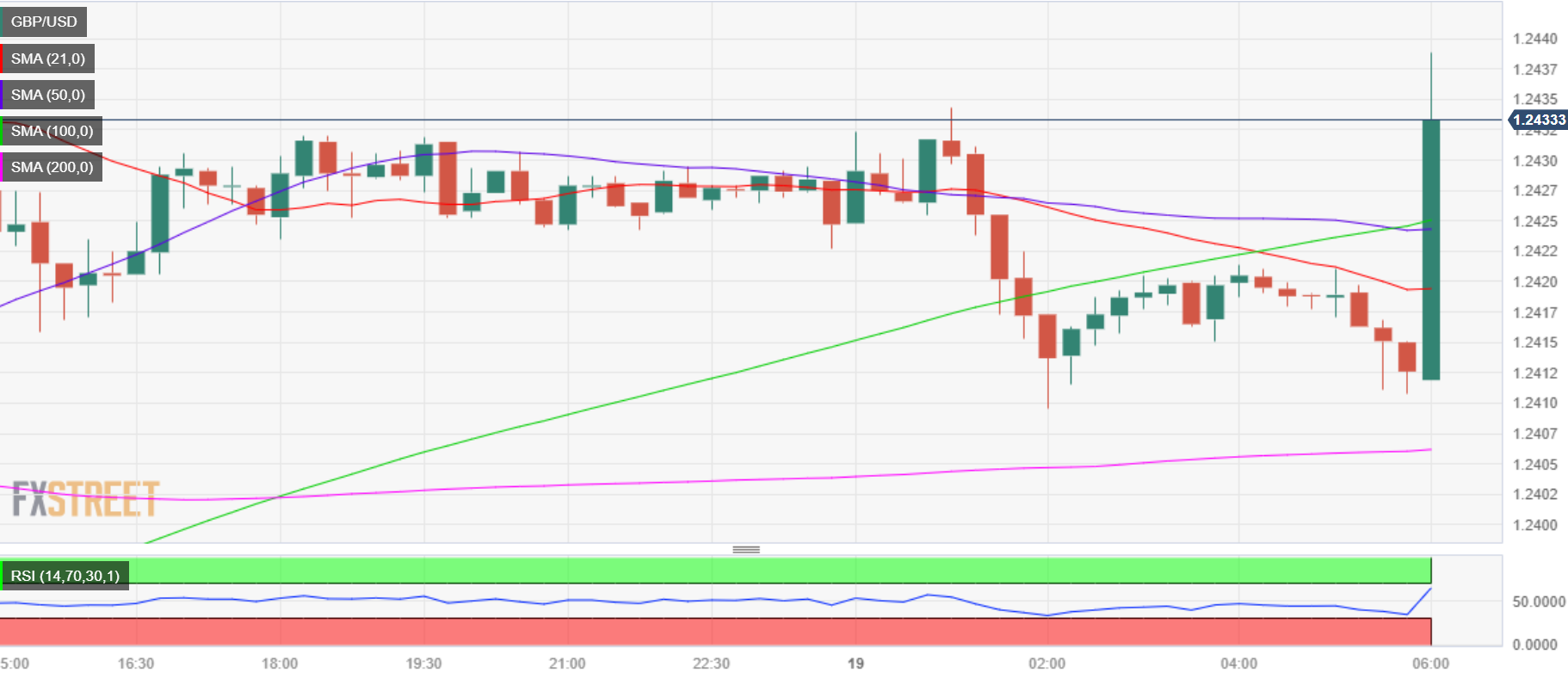- Breaking: UK annualized CPI inflation softens to 10.1% in March vs. 9.8% expected
Notícias do Mercado
Breaking: UK annualized CPI inflation softens to 10.1% in March vs. 9.8% expected
- UK CPI drops to 10.1% YoY in March vs. 9.8% expected.
- Monthly UK CPI arrives at 0.8% in March vs. 0.5% expected.
- GBP/USD rises toward 1.2450 on upbeat UK CPIs.
The latest data published by the UK Office for National Statistics (ONS) showed on Wednesday that the British annualized Consumer Price Index (CPI) declined to 10.1% in March against the 10.4% jump recorded in February while beating estimates of a 9.8% print.
Meanwhile, the Core CPI gauge (excluding volatile food and energy items) steadied at 6.2% YoY last month versus 6.2% seen in February. The market expectations are for a 6.0% clip.
The monthly figures showed that the UK consumer prices eased to 0.8% in February vs. 0.5% estimates and 1.1% previous.
The UK Retail Price Index for March stood at 0.7% MoM and 13.5% YoY, beating expectations across the time horizon.
UK Finance Minister, Jeremy Hunt, said that “figures reaffirm exactly why we must continue with our efforts to drive down inflation.”
Additional takeaways (via ONS)
“The largest downward contributions to the monthly change in both the CPIH and CPI annual rates came from motor fuels, and housing and household services (particularly liquid fuels), partially offset by upward contributions from food, and recreation and culture.”
“Core CPIH (excluding energy, food, alcohol and tobacco) rose by 5.7% in the 12 months to March 2023, unchanged from February; the CPIH goods annual rate eased from 13.4% to 12.7% over the two months, while the CPIH services annual rate rose slightly from 5.6% to 5.7%.”
FX implications
In an initial reaction to the UK CPI numbers, the GBP/USD pair jumped to hit fresh session highs at 1.2439 before reversing quickly to near 1.2430, where it now wavers. The pair is up 0.06% on the day.

GBP/USD: 15-minutes chart
Why does UK inflation matter to traders?
The Bank of England (BOE) is tasked with keeping inflation, as measured by the headline Consumer Price Index (CPI) at around 2%, giving the monthly release its importance. An increase in inflation implies a quicker and sooner increase in interest rates or the reduction of bond-buying by the BOE, which means squeezing the supply of pounds. Conversely, a drop in the pace of price rises indicates looser monetary policy. A higher-than-expected result tends to be GBP bullish.